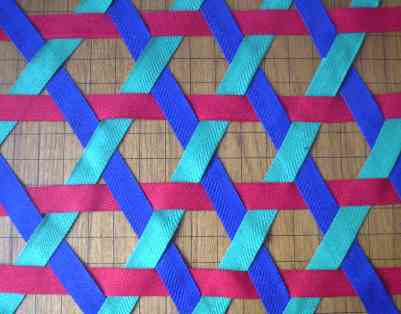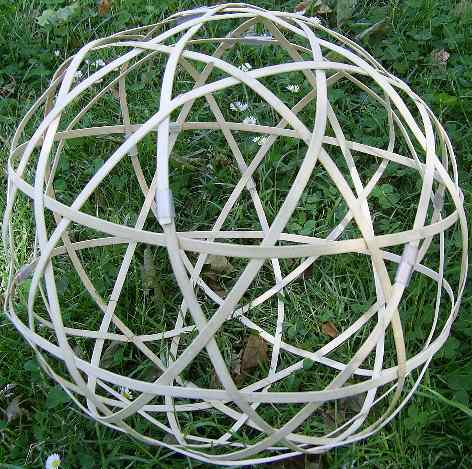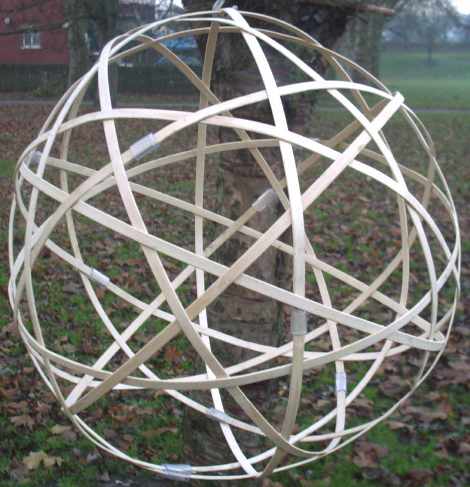
Triaxial Weaving
Triaxial woven spheres
Here are some woven spheres:

Teething ball
One of the simplest triaxial balls - 12 pentagons and no hexagons.

Large woven sphere
This is based on a 2,1 icosahedron - and has 12 pentagons and 60 hexagons.

Double woven sphere
This is based on a 1,1 icosahedron - and has 12 pentagons and 20 hexagons.

Medium woven sphere
This is based on a 2,0 icosahedron - and has 12 pentagons and 30 hexagons.

Small woven sphere
This has the geometry of a 1,1 icosahedron (soccer ball) - and has 12 pentagons and 20 hexagons.
All models were constructed using triaxial weaving.
I made the spheres using wooden struts - obtained by
disassembling a venetian blind. Struts were linked into
rings using PVC tubing. The results were then woven
together.
These woven spheres have no hubs - and are cheap and easy to
make.
Similar spheres could be easily be constructed from plastic or metal
materials.
Theory
Woven spheres are remarkably strong - and seem significantly
more resistant to "dimpling" than more conventional geodesic
structures.
The concave region of each strut is under continuous
pressure - while the convex regions are under continuous
tension. Such spheres can thus be considered to share some
of their properties with tensegrity systems.
Application
The most obvious application for this sort of object is a
protective dome.
Unfortunately the weaving pattern makes covering the dome
with regular panels more challenging than usual.
However some domes are covered with tarpaulin or polythene.
In such cases attaching the cover to a rather irregular
surface is usually no big deal - and this sort of woven
construction method could be attractive.
Links
PVC conduit sphere
Woven sphere
Marble woven sphere
Crystical woven sphere
Bronze woven sphere
Nine Chains To The Moon - book cover
Bamboo weaving (1)
Bamboo weaving (2)
Camilla Fox's Plaited Models
Rattan basket weave ball
Ivory ball
George Hart: woven ball
Tim Tyler |
Contact |
http://hexdome.com/
|